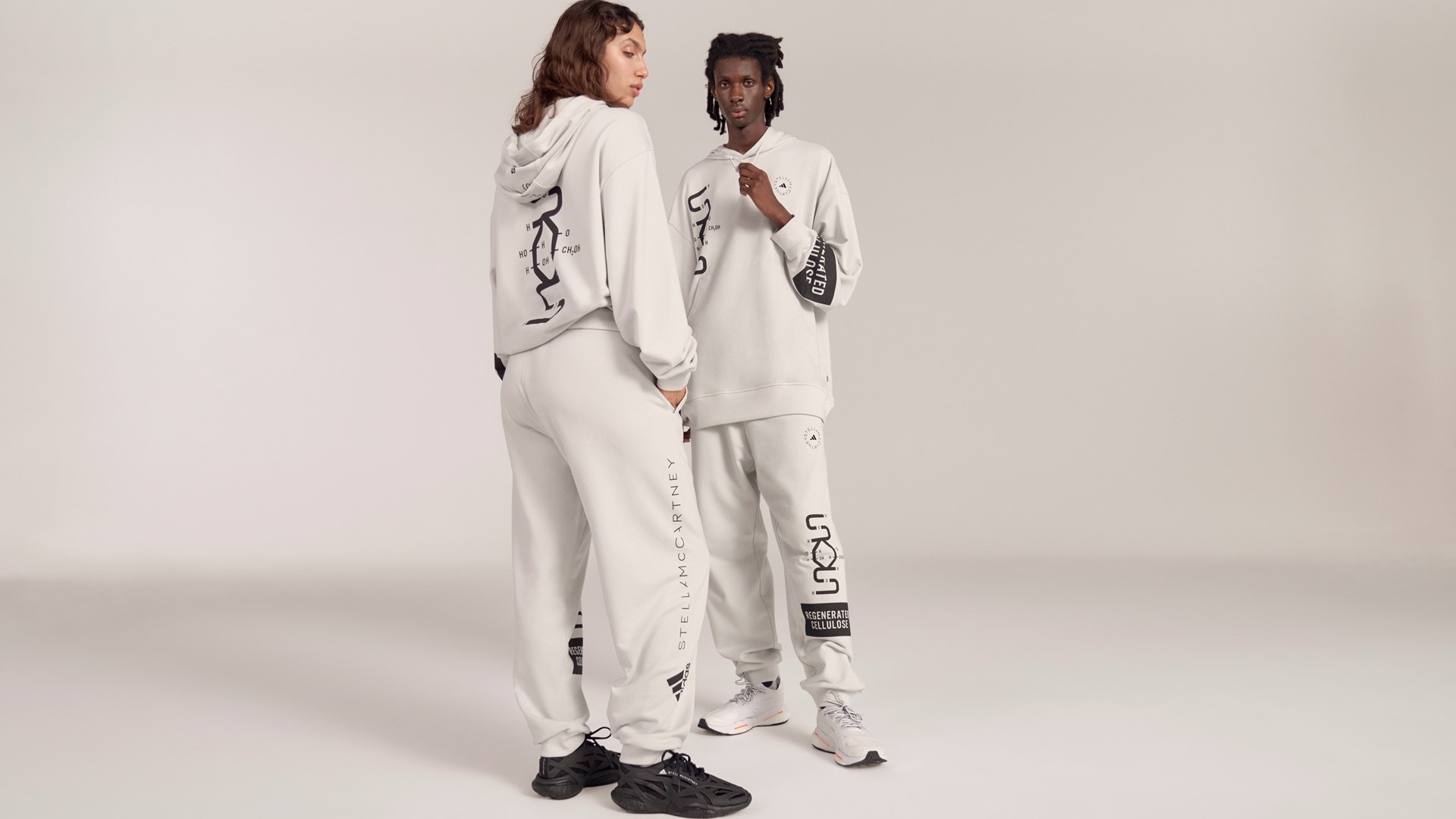In today’s fashion industry, the collaboration between brands and celebrities is reshaping market dynamics and consumer behavior. This article explores the multifaceted impact of these partnerships, highlighting how they enhance brand visibility, influence consumer preferences, and promote sustainability. By examining the key aspects of celebrity collaborations, readers will gain insights into how these alliances can drive brand success and meet the evolving demands of conscious consumers. Understanding these trends is essential for anyone looking to navigate the modern fashion landscape effectively.
In this article you will find:
Sustainable Fashion Innovation in the McCartney Adidas Collaboration
The collaboration between Stella McCartney and Adidas marks a pivotal moment in the realm of sustainable fashion. As consumers become increasingly conscious of their environmental impact, brands are responding by prioritizing sustainability in their designs. This partnership exemplifies how innovation can be seamlessly integrated into fashion while adhering to eco-friendly principles.
Redefining Materials
One of the most significant aspects of this collaboration is the focus on sustainable materials. McCartney and Adidas are pioneering the use of recycled and organic materials, setting a new standard for the industry. By utilizing materials such as recycled polyester and organic cotton, they are not only reducing waste but also minimizing the carbon footprint associated with production.
- Recycled Polyester: Made from post-consumer plastic bottles, this material helps divert waste from landfills.
- Organic Cotton: Grown without synthetic pesticides and fertilizers, organic cotton promotes healthier ecosystems.
This commitment to sustainable materials not only enhances the environmental credentials of their products but also appeals to a growing demographic of eco-conscious consumers seeking stylish yet responsible options.
Innovative Production Processes
In addition to using sustainable materials, McCartney and Adidas are rethinking their production processes. The collaboration embraces cutting-edge technologies that minimize waste and energy consumption. For instance, the use of digital printing techniques allows for more precise designs, reducing the excess fabric typically generated in traditional manufacturing.
Furthermore, the partnership is exploring circular fashion concepts, where products are designed with their end-of-life in mind. This approach encourages recycling and upcycling, ensuring that items can be repurposed rather than discarded.
Transparency and Ethical Practices
Transparency in the supply chain is another cornerstone of this collaboration. McCartney and Adidas are committed to ethical practices, ensuring that every step of the production process is scrutinized. This includes fair labor practices and responsible sourcing of materials. By providing consumers with insights into their supply chain, they foster trust and accountability.
As part of their efforts, the brands have publicly shared their sustainability goals and progress, allowing consumers to engage with their mission. This level of transparency not only enhances brand loyalty but also sets a precedent for other companies in the fashion industry.
Consumer Engagement and Education
The collaboration goes beyond just creating sustainable products; it also aims to educate consumers about the importance of sustainability in fashion. Through marketing campaigns and social media engagement, McCartney and Adidas are raising awareness about the environmental impact of fashion choices.
By promoting a message of sustainability, they inspire consumers to make informed decisions, encouraging a shift towards more responsible consumption patterns. This educational approach is vital in fostering a culture of sustainability within the fashion industry.
In conclusion, the partnership between Stella McCartney and Adidas is a groundbreaking example of how sustainable fashion innovation can redefine industry standards. By prioritizing eco-friendly materials, innovative production processes, transparency, and consumer education, they are not only revolutionizing style but also paving the way for a more sustainable future in fashion. For more insights into sustainable practices in fashion, visit the McKinsey State of Fashion report.
The Intersection of Performance and Style in Activewear
The collaboration between Stella McCartney and Adidas not only emphasizes sustainability but also highlights a crucial trend in the fashion industry: the merging of performance and style in activewear. As consumers increasingly seek clothing that can transition seamlessly from workouts to everyday life, the demand for stylish yet functional activewear has never been higher.
Performance-Driven Design
At the heart of the McCartney and Adidas collaboration is a commitment to performance-driven design. This partnership leverages advanced technologies to create garments that enhance athletic performance without compromising on style. Key features include:
- Moisture-Wicking Fabrics: These materials draw sweat away from the body, keeping athletes dry and comfortable during intense workouts.
- Breathability: Strategically placed mesh panels and lightweight fabrics allow for optimal airflow, promoting comfort and temperature regulation.
- Flexibility and Stretch: Incorporating elastane or similar materials ensures that garments move with the body, providing support during various activities.
By integrating these performance features, the collaboration addresses the needs of active individuals who require clothing that supports their lifestyle while remaining fashionable.
Fashion-Forward Aesthetics
While performance is critical, the aesthetic appeal of activewear is equally important. The McCartney and Adidas collection showcases designs that are not only functional but also visually striking. Key design elements include:
- Bold Colors and Patterns: The use of vibrant colors and unique patterns allows wearers to express their personal style, making activewear a fashionable choice.
- Tailored Fits: The collaboration emphasizes flattering silhouettes that enhance the body’s natural shape, ensuring that wearers feel confident both in and out of the gym.
- Versatile Styles: Many pieces are designed to transition from workout sessions to casual outings, allowing for a seamless blend of performance and style.
This focus on fashion-forward aesthetics ensures that consumers do not have to sacrifice style for functionality, making activewear a staple in modern wardrobes.
Consumer Demand for Versatility
The modern consumer is increasingly seeking versatility in their clothing. The McCartney and Adidas collaboration responds to this trend by offering pieces that can be worn in various settings. This versatility is essential as more people embrace athleisure as a lifestyle choice, blending fitness and fashion seamlessly.
As a result, the collection includes items suitable for:
- High-Intensity Workouts: Designed for performance, these pieces support rigorous training sessions.
- Casual Outings: Stylish enough for brunch or errands, allowing wearers to look chic while remaining comfortable.
- Travel: Lightweight and wrinkle-resistant materials make these garments ideal for on-the-go lifestyles.
This adaptability not only enhances the appeal of the collection but also aligns with the evolving expectations of consumers who prioritize multifunctional clothing.
The Future of Activewear
The intersection of performance and style in activewear is shaping the future of the fashion industry. As brands like McCartney and Adidas continue to innovate, we can expect to see further advancements in technology and design that cater to the needs of active consumers. This includes:
- Smart Fabrics: Innovations such as temperature-regulating materials and fabrics that monitor biometrics are on the horizon.
- Enhanced Sustainability: Continued focus on eco-friendly materials and processes will further align performance with environmental responsibility.
- Inclusivity in Design: A growing emphasis on inclusive sizing and styles that cater to diverse body types and preferences.
As the demand for stylish and functional activewear continues to rise, the collaboration between Stella McCartney and Adidas serves as a benchmark for the industry. For those interested in exploring the latest trends in activewear, check out the insights from Next Gallery Malls.
Consumer Trends Shaping the Future of Eco-Friendly Fashion
The landscape of fashion is undergoing a transformative shift as consumers increasingly prioritize sustainability in their purchasing decisions. This movement towards eco-friendly fashion is not just a trend but a fundamental change in consumer behavior, driven by a variety of factors. This section delves into the key consumer trends that are shaping the future of eco-friendly fashion, reflecting a growing awareness and commitment to environmental responsibility.
Increased Demand for Sustainable Practices
As awareness of environmental issues grows, consumers are actively seeking brands that demonstrate a commitment to sustainable practices. This demand is characterized by:
- Ethical Sourcing: Consumers are interested in knowing where and how their clothing is made. Brands that source materials ethically and transparently are gaining favor.
- Eco-Friendly Materials: There is a strong preference for products made from organic, recycled, or otherwise sustainable materials. This includes fabrics like organic cotton, Tencel, and recycled polyester.
- Reduced Carbon Footprint: Shoppers are increasingly considering the carbon footprint of their purchases, favoring brands that utilize renewable energy and sustainable manufacturing processes.
This shift is prompting many companies to adopt more sustainable practices, as consumers are willing to pay a premium for products that align with their values.
Rise of Conscious Consumerism
Conscious consumerism is on the rise, with individuals becoming more mindful of their consumption habits. This trend is driven by:
- Minimalism: Many consumers are embracing minimalism, opting for fewer, higher-quality items that last longer, rather than fast fashion that contributes to waste.
- Second-Hand Shopping: Thrift stores and online resale platforms are gaining popularity as consumers look for unique items while also reducing waste.
- Brand Loyalty to Sustainable Labels: Consumers are increasingly loyal to brands that prioritize sustainability, often choosing to support smaller, eco-conscious companies over larger fast-fashion retailers.
This conscious approach to shopping reflects a broader societal shift towards valuing sustainability and ethical practices in all aspects of life.
Influence of Social Media and Digital Activism
Social media plays a pivotal role in shaping consumer trends, particularly in the realm of eco-friendly fashion. Platforms like Instagram, TikTok, and Pinterest are not only sources of inspiration but also powerful tools for advocacy. Key influences include:
- Viral Sustainability Campaigns: Social media campaigns that promote sustainable fashion practices can quickly gain traction, influencing consumer behavior on a large scale.
- Influencer Partnerships: Many influencers are using their platforms to promote eco-friendly brands, helping to educate their followers about sustainable fashion choices.
- Community Engagement: Online communities focused on sustainability encourage discussions about eco-friendly practices, fostering a culture of shared values among consumers.
As a result, brands that effectively engage with consumers on social media and align their messaging with sustainability are likely to see increased support and loyalty.
Technological Innovations Driving Sustainability
Technological advancements are also playing a crucial role in the evolution of eco-friendly fashion. Innovations are enabling brands to create sustainable products more efficiently and effectively. Key developments include:
- Smart Fabrics: Innovations in textile technology are leading to the creation of fabrics made from recycled materials or those produced with minimal environmental impact.
- 3D Printing: This technology allows for the on-demand production of garments, significantly reducing waste associated with traditional manufacturing methods.
- Blockchain for Transparency: Some brands are leveraging blockchain technology to provide consumers with verifiable information about the origins and production processes of their products.
These technological innovations not only enhance the sustainability of fashion but also attract tech-savvy consumers who appreciate cutting-edge solutions.
As consumer trends continue to evolve, the future of eco-friendly fashion looks promising. Brands that embrace these trends and prioritize sustainability will not only meet the demands of conscious consumers but also contribute to a more sustainable future for the fashion industry. For more insights into the impact of sustainability on fashion, visit the McKinsey State of Fashion report.
The Impact of Celebrity Collaborations on Fashion Industry Dynamics
In recent years, the fashion industry has witnessed a significant shift in dynamics, largely driven by the rise of celebrity collaborations. These partnerships between fashion brands and high-profile figures have not only changed how products are marketed but have also influenced consumer behavior and industry trends. This section explores the multifaceted impact of celebrity collaborations on the fashion landscape, with a focus on their implications for brands and consumers alike.
Boosting Brand Visibility and Awareness
One of the most immediate effects of celebrity collaborations is the enhanced visibility and awareness they bring to brands. When a well-known figure partners with a fashion label, it often leads to:
- Increased Media Coverage: Collaborations generate buzz across various media outlets, from fashion magazines to social media platforms, amplifying brand exposure.
- Access to New Audiences: Celebrities often have dedicated fan bases, allowing brands to tap into new demographics and expand their reach.
- Influencer Marketing Synergy: Celebrities, acting as influencers, can leverage their platforms to promote products, creating a powerful synergy that drives consumer interest.
This heightened visibility can lead to increased sales and brand loyalty, making celebrity collaborations a strategic move for many fashion companies.
Shaping Consumer Preferences and Trends
Celebrity collaborations also play a critical role in shaping consumer preferences and fashion trends. The influence of celebrities extends beyond mere endorsement; it often dictates what is considered fashionable. Key aspects include:
- Trendsetting Styles: Celebrities often set trends by showcasing unique styles and designs, prompting consumers to seek similar items in the market.
- Authenticity and Aspirational Marketing: Collaborations that feel authentic resonate with consumers, making them more likely to purchase products that reflect their values and aspirations.
- Limited Editions and Exclusivity: Many collaborations produce limited-edition items, creating a sense of urgency and exclusivity that drives consumer demand.
As a result, brands that effectively leverage celebrity partnerships can significantly influence the direction of fashion trends and consumer behavior.
Driving Sustainability and Ethical Practices
Interestingly, celebrity collaborations are also beginning to incorporate themes of sustainability and ethical fashion. As consumers become more environmentally conscious, celebrities are using their platforms to advocate for sustainable practices. This trend manifests in several ways:
- Promotion of Eco-Friendly Brands: Celebrities are increasingly aligning with brands that prioritize sustainability, thus encouraging their followers to make more responsible fashion choices.
- Awareness Campaigns: Collaborations often include campaigns that raise awareness about environmental issues, further embedding sustainability into the fashion narrative.
- Innovative Sustainable Designs: Some collaborations focus on creating products from recycled or sustainable materials, demonstrating that style and sustainability can coexist.
This shift not only enhances the appeal of celebrity collaborations but also contributes to a broader movement towards sustainability in the fashion industry.
Challenges and Criticisms
Despite the many benefits of celebrity collaborations, there are also challenges and criticisms that brands must navigate. These include:
- Authenticity Concerns: Collaborations may be viewed as inauthentic if the celebrity does not genuinely align with the brand’s values, potentially alienating consumers.
- Over-Saturation: As more brands engage in celebrity partnerships, the market can become saturated, leading to consumer fatigue and diminishing returns.
- Impact on Brand Identity: Relying heavily on celebrity endorsements can dilute a brand’s identity, making it difficult to establish a unique voice in the marketplace.
Brands must carefully consider these factors to ensure that their collaborations enhance rather than undermine their reputation and market position.
Future Trends in Celebrity Collaborations
Looking ahead, the landscape of celebrity collaborations in fashion is poised for further evolution. Potential future trends include:
- Increased Focus on Inclusivity: Collaborations that celebrate diversity and inclusivity are likely to resonate more with consumers, reflecting broader societal shifts.
- Integration of Technology: Collaborations may increasingly incorporate digital elements, such as virtual fashion shows or augmented reality experiences, enhancing consumer engagement.
- Long-Term Partnerships: Brands may shift towards developing long-term relationships with celebrities, fostering deeper connections and sustained consumer loyalty.
As the fashion industry continues to adapt, celebrity collaborations will undoubtedly remain a key factor in shaping its dynamics. For further insights into the impact of celebrity culture on fashion, check out the McKinsey State of Fashion report.
The collaboration between Stella McCartney and Adidas exemplifies a significant shift towards sustainable fashion, emphasizing eco-friendly materials, transparency in supply chains, and consumer education. By prioritizing ethical practices and innovative production processes, the partnership not only enhances brand loyalty but also sets a new standard for the industry. The brands engage consumers through awareness campaigns that highlight the environmental impact of fashion choices, encouraging responsible consumption.
Celebrity collaborations are reshaping the fashion landscape by boosting brand visibility, influencing consumer preferences, and promoting sustainability. Brands should focus on authenticity and inclusivity in their partnerships, while also leveraging technology to enhance consumer engagement. As the industry evolves, companies that align their values with those of their consumers will thrive, making sustainability a core aspect of their identity.




